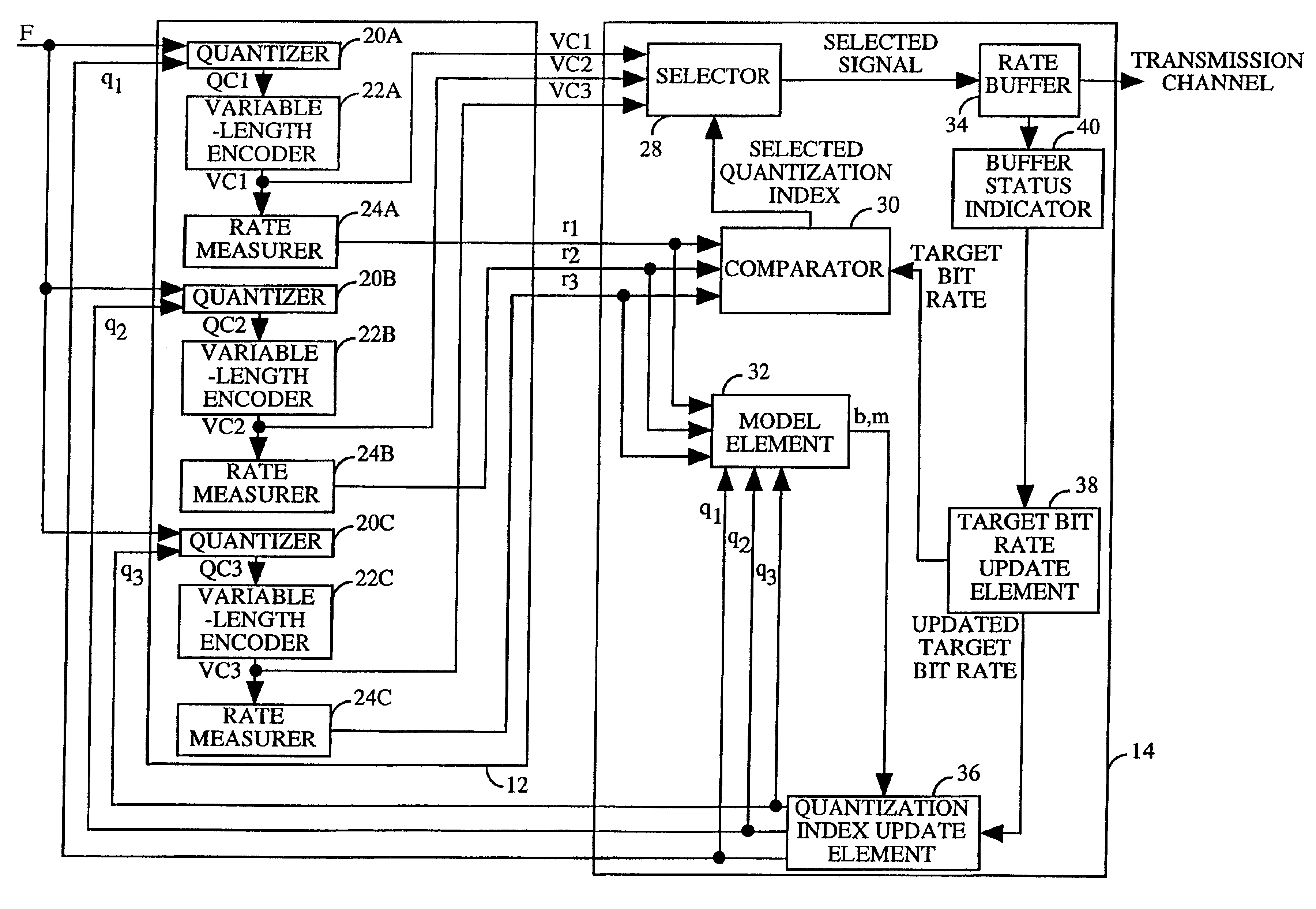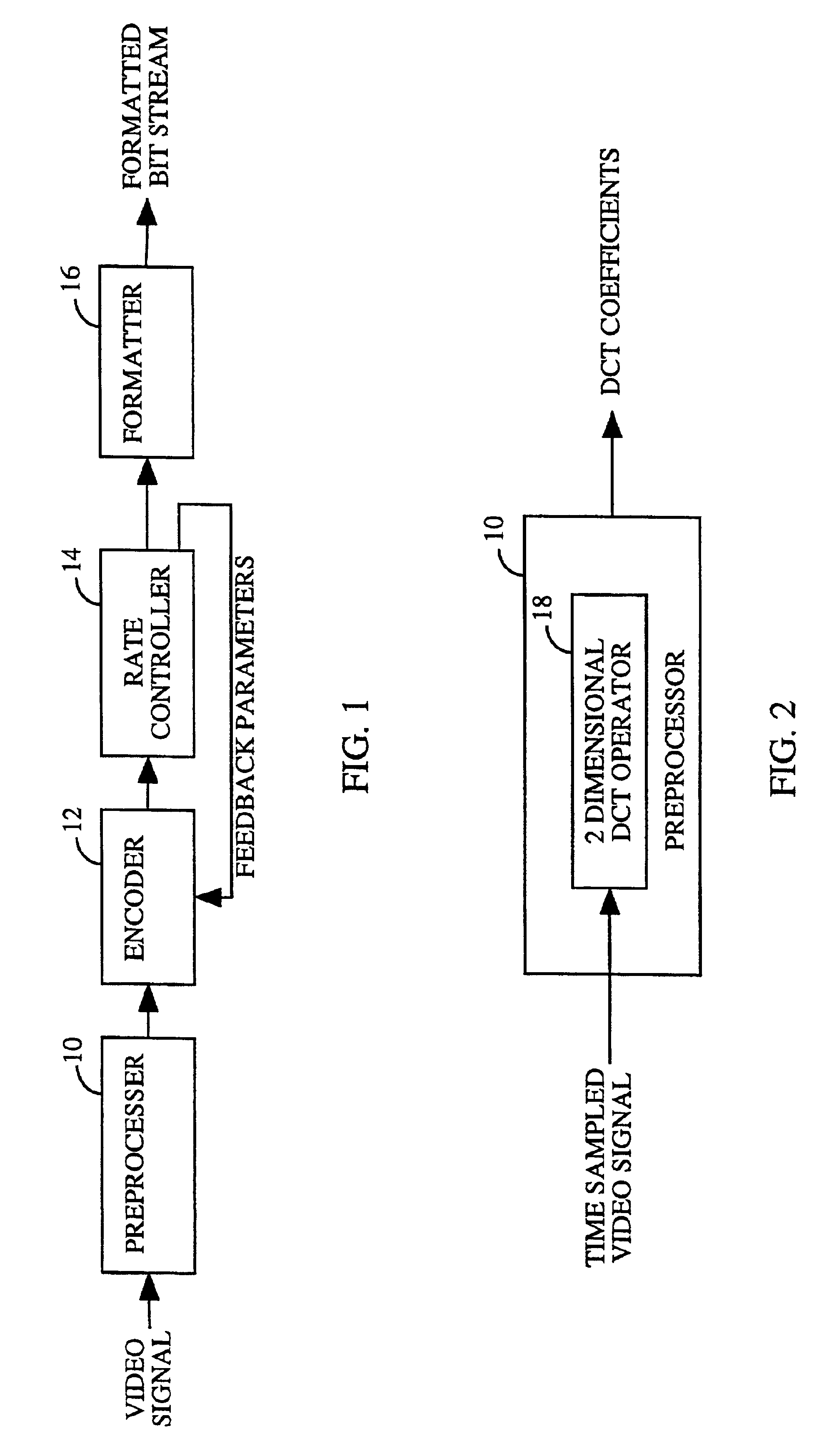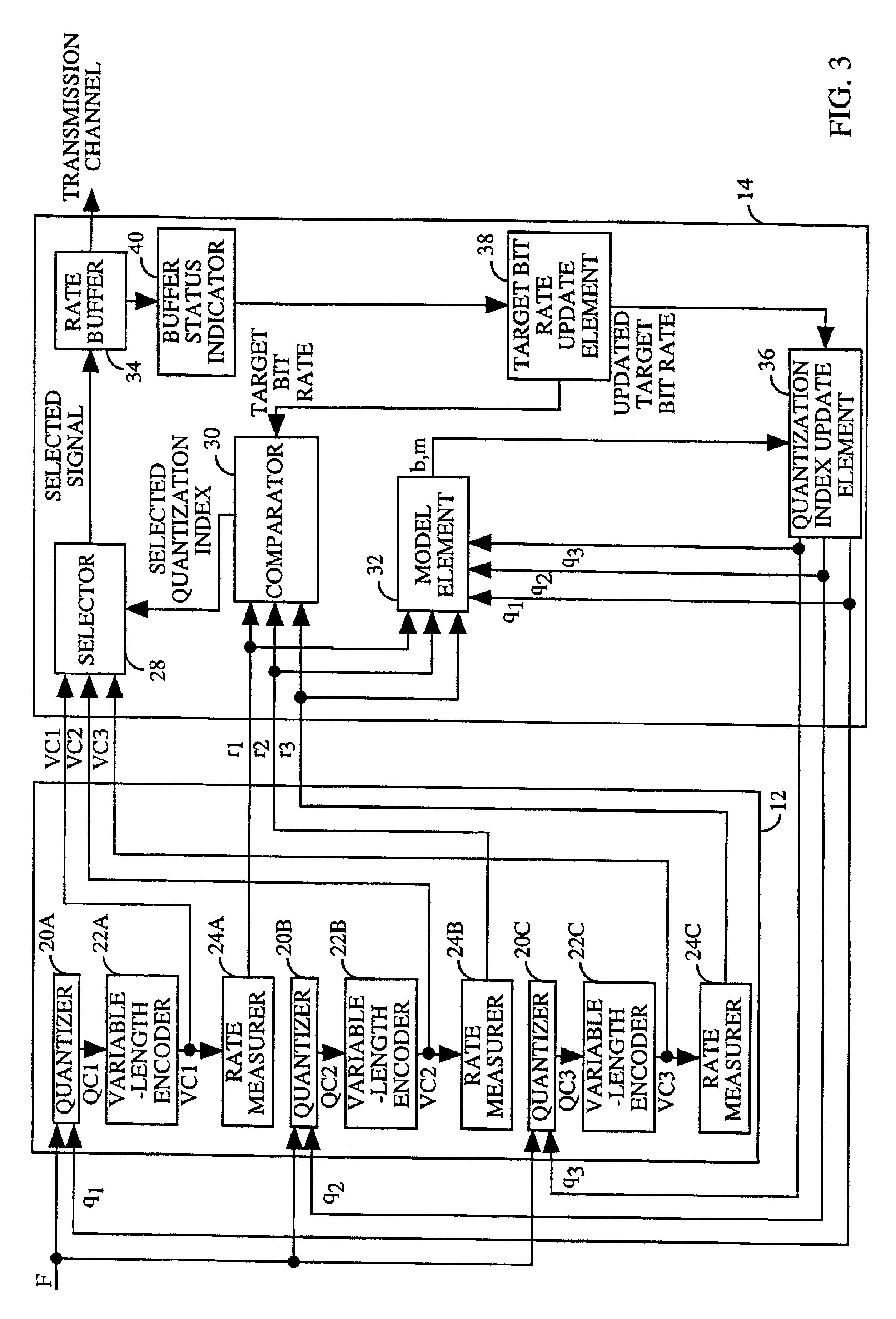Adaptive rate control for digital video compression
a digital video and rate control technology, applied in the field of image processing, can solve the problems of reducing the bandwidth of color television, complication of non-constant encoded data rate, and the inability to solve the problem of fluctuation of decoded frame rate by itself, so as to prevent the rate buffer
- Summary
- Abstract
- Description
- Claims
- Application Information
AI Technical Summary
Benefits of technology
Problems solved by technology
Method used
Image
Examples
Embodiment Construction
[0028]An exemplary data compression system which incorporates the rate controller of the present invention is illustrated in FIG. 1. The system shown in FIG. 1 may be used to compress a video signal for transmission. For example, the system of FIG. 1 may be used to compress a HDTV or SDTV signal, although it should be understood that any other type of video, or even audio, signal may benefit from this compression system.
[0029]As shown in FIG. 1, a video signal is first presented to preprocessor 10 in preparation for compression. Preprocessor 10 may serve a variety of purposes, or may be excluded from the system altogether. Preprocessor 10 may, for example, format the video signal into components that are more easily processed by the compression system. The output of the preprocessor 10 is presented to encoder 12. Encoder 12 quantizes the data that it has received then compresses the quantized coefficients. The quantization scheme performed is dependent on feedback quantization param...
PUM
 Login to View More
Login to View More Abstract
Description
Claims
Application Information
 Login to View More
Login to View More - R&D
- Intellectual Property
- Life Sciences
- Materials
- Tech Scout
- Unparalleled Data Quality
- Higher Quality Content
- 60% Fewer Hallucinations
Browse by: Latest US Patents, China's latest patents, Technical Efficacy Thesaurus, Application Domain, Technology Topic, Popular Technical Reports.
© 2025 PatSnap. All rights reserved.Legal|Privacy policy|Modern Slavery Act Transparency Statement|Sitemap|About US| Contact US: help@patsnap.com



